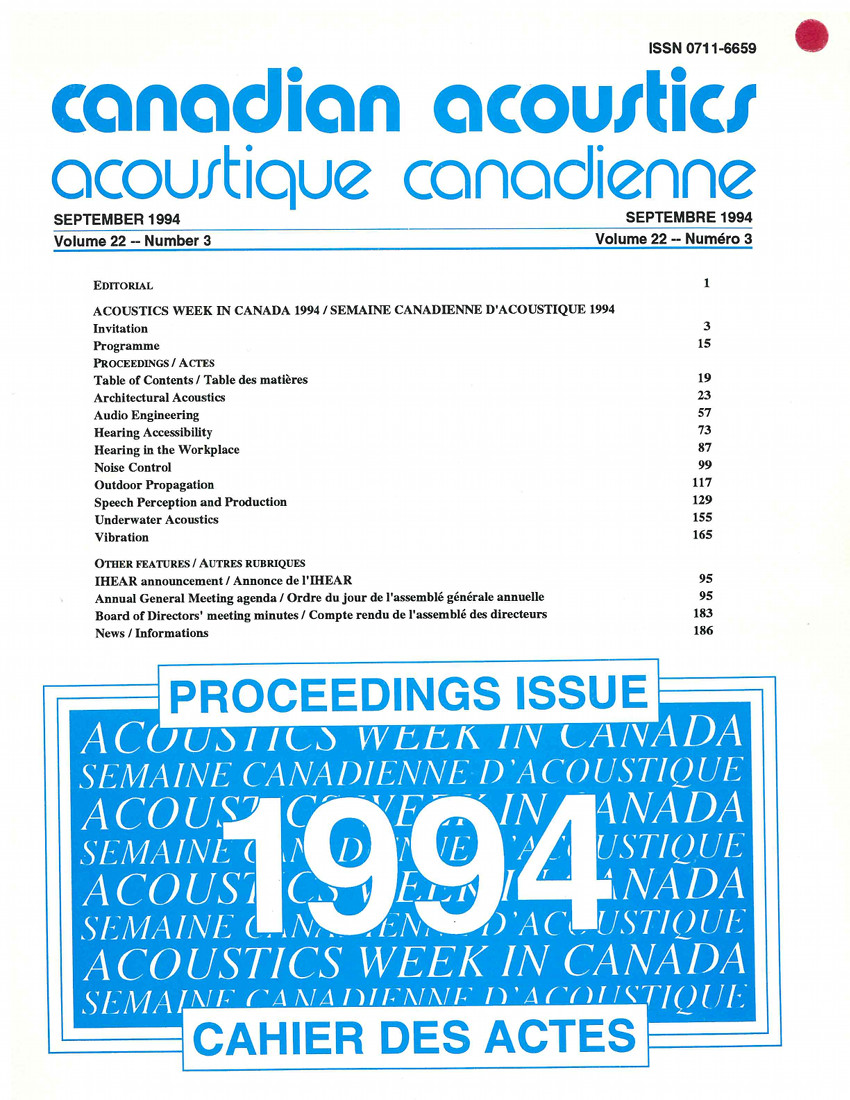Effects of excess ground attenuation on aircraft noise contours
Keywords:
acoustic noise, acoustic wave absorption, atmospheric acoustics, airport noise prediction programs, expected noise level contours, ground attenuation, aircraft noise source, acoustical impedance, aircraft fly-by, ground-to-ground propagation, air-to-ground propagationAbstract
Various airport noise prediction programs are used to calculate expected noise level contours around airports based on the details of the aircraft operations. One of the major factors influencing these contours is the excess attenuation of the sound from the aircraft when the sound is propagating at near grazing incidence to the ground. When considered in detail, this excess attenuation is a complex phenomenon, but airport noise prediction programs use quite simple approximations to estimate the effect of excess ground attenuation. The attenuation of sound from an aircraft traveling close to the ground will depend on a number of factors that will vary as the aircraft passes by. The attenuation will be influenced by the spectrum and directionality of the aircraft noise source and these effects will vary with time as the aircraft passes an observation point. The resulting attenuation will also be influenced by the acoustical impedance of the ground as well as various meteorological effects. Thus, to accurately predict the attenuation of the sound from an aircraft, quite complex calculations would be required on a point by point basis as the aircraft passes an observation point. Most airport noise prediction programs include only quite simple approximations to these complex effects. The influence of each aircraft fly-by is typically only calculated for the point of closest approach to the observation point and not as a complete point-by-point calculation for the complete fly-by. Usually, only overall A-weighted or PNL-weighted levels are considered. The excess ground attenuation is usually calculated in two separate parts: (a) ground-to-ground propagation, and (b) air-to-ground propagationAdditional Files
Published
How to Cite
Issue
Section
License
Author Licensing Addendum
This Licensing Addendum ("Addendum") is entered into between the undersigned Author(s) and Canadian Acoustics journal published by the Canadian Acoustical Association (hereinafter referred to as the "Publisher"). The Author(s) and the Publisher agree as follows:
-
Retained Rights: The Author(s) retain(s) the following rights:
- The right to reproduce, distribute, and publicly display the Work on the Author's personal website or the website of the Author's institution.
- The right to use the Work in the Author's teaching activities and presentations.
- The right to include the Work in a compilation for the Author's personal use, not for sale.
-
Grant of License: The Author(s) grant(s) to the Publisher a worldwide exclusive license to publish, reproduce, distribute, and display the Work in Canadian Acoustics and any other formats and media deemed appropriate by the Publisher.
-
Attribution: The Publisher agrees to include proper attribution to the Author(s) in all publications and reproductions of the Work.
-
No Conflict: This Addendum is intended to be in harmony with, and not in conflict with, the terms and conditions of the original agreement entered into between the Author(s) and the Publisher.
-
Copyright Clause: Copyright on articles is held by the Author(s). The corresponding Author has the right to grant on behalf of all Authors and does grant on behalf of all Authors, a worldwide exclusive license to the Publisher and its licensees in perpetuity, in all forms, formats, and media (whether known now or created in the future), including but not limited to the rights to publish, reproduce, distribute, display, store, translate, create adaptations, reprints, include within collections, and create summaries, extracts, and/or abstracts of the Contribution.


